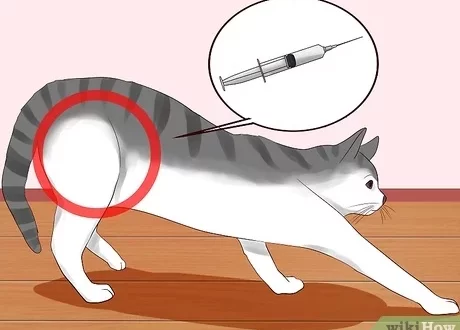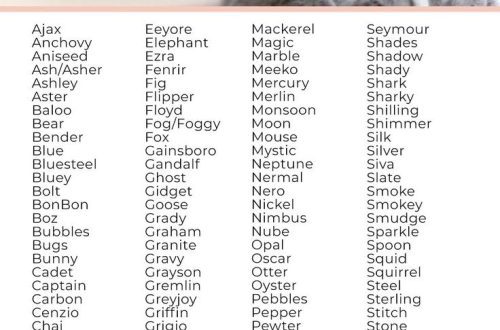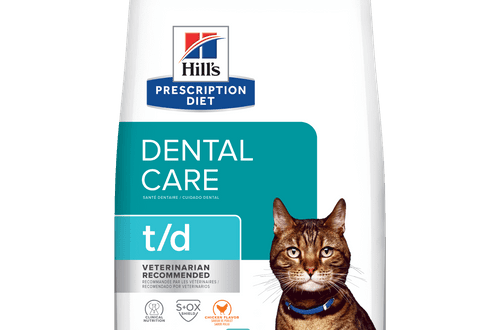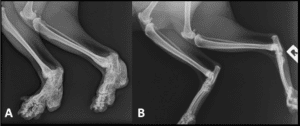
Osteochondrodysplasia of Scottish cats
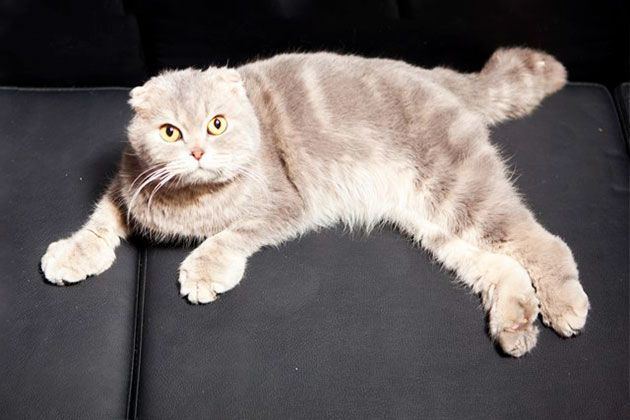
Translated from the Greek, “osteo” is a bone, and “dysplasia” is a developmental disorder. OHD is a genetic malformation of cartilage and bone tissue, leading to a slowdown in their growth. The result of such a pathology is the underdevelopment of the bone and cartilage system, including the ear cartilage, leading to “lop-earedness”. The first mention of skeletal deformities in Scottish cats dates back to 1971, although the breed was registered in 1966. Pathology is often found in offspring when both parents are lop-eared. Scottish cats with straight ears – Scottish Straight and Highland Straight – are not susceptible to osteochondrodysplasia. It is the lop-eared gene that makes cats vulnerable to osteochondrodysplasia, which straights do not have. However, they can also have deformities of the musculoskeletal system, because The Scottish breed is problematic in this regard. By the way, not only the Scots are considered vulnerable on this basis, but also the Ukrainian Levkoy, in the selection of which Scottish Fold cats were used.
Contents
Symptoms of the disease in kittens and cats
The disease can manifest itself in different ways. Owners do not always understand that the pet has problems. Signs by which osteochondrodysplasia can be suspected:
- Violation of the growth and development of kittens. Toddlers lag behind their healthy siblings.
- The tail can be shortened, twisted, thickened, inactive.
- Violation of the motor function of the joints. More often, owners notice a problem in the tail, carpal and metatarsal joints.
- Curvature of the limbs, deformation of the fingers and claws.
- Thickening of the paws, bony growths under the skin located in the area of the calcaneus, ulceration of the growths.
- Lameness.
- Shackled gait.
- Difficulty jumping up and down from hills.
- Pain in the limbs.
- Increased vocalization when walking or touching limbs.
- Crooked teeth, overshot, nose too short.
Pathology usually manifests itself in cats at 1,5-2 months. At this age, it is already quite well expressed, since osteoarthritis (degenerative process of bone tissue) has time to develop in the bones. The most typical symptom of OCD is limb deformity. Problems only get worse with age.
Diagnostics
The diagnosis is complex. The doctor conducts an examination, collects an anamnesis, specifies the breed of the parents of a kitten or an adult cat. Without additional diagnostics, it is impossible to make a diagnosis with accuracy, since osteochondrodysplasia can be confused with other pathologies, for example, with neoplasia or hypervitaminosis A. Therefore, an x-ray will be required, on which changes in bone and joint tissue can be seen. If the doctor has doubts about the correctness of the diagnosis, then a histological examination of the altered tissues is carried out. Treatment There is no specific treatment for cats with this pathology. If the process is already running, then the only thing that can be done is to alleviate the condition of the animal. Cats with this problem are given maintenance therapy that can improve their quality of life. However, it does not always improve so much that the pet can at least walk. Supportive care:
- Since sick cats cannot properly care for their claws, they need to be trimmed, otherwise they can grow into soft tissues. You can do this yourself, or by contacting a veterinary clinic.
- Do not allow obesity in your pet, excess weight has an extremely negative effect on the joints and diseased paws. It is recommended to feed cats with food to reduce or maintain weight, the presence of glucosamine and chondroitin in the composition will be a plus.
- Chondroprotectors. Not a panacea, but can improve a pet’s quality of life by helping joints.
- With severe pain, the veterinarian prescribes non-steroidal anti-inflammatory drugs to alleviate the condition. However, you should not abuse or apply it yourself, as there are side effects.
In severe cases, surgery is indicated (osteotomy and arthrodesis). The operation can give very good results if there were indications for it. In some cases, euthanasia is still recommended. These are cases of a very severe progressive disease with severe pain. If the animal suffers, cannot lead a normal life, sits on pills all the time, which do not help much.
The importance of choosing a Scottish cat in trusted catteries
Any owner is upset if their pet is sick. Especially when the disease is incurable and brings suffering. How to avoid the disease? It is recommended to buy a Scottish kitten not “from hands” from unknown parents, but from trusted breeders, where cats are bred in accordance with all the rules, taking into account the breed characteristics of Scottish cats. When choosing a kitten of a Scottish breed, pay attention not only to the appearance, coat, ears and eyes, the behavior of the baby, but also necessarily – to the movements of the kitten: does it run and jump well, is it a short tail and does it have creases, is it even? paws and whether fingers and claws are correctly formed. Look at both parents of the kitten, appearance, and whether they are both lop-eared (unacceptable when breeding). To be sure, you can take a veterinarian or a felinologist with you for examination and selection, who will help you choose a healthy kitten.



